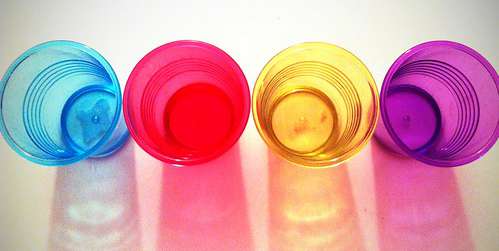
Spectral analysis of plastic plaques is critical in the development of new products and the evaluation of plastic behavior to ensure optimal performance. Image Source: Flickr user Frédérique Voisin-Demery
Plastic plaques are produced for a variety of purposes and serve an essential role in the development and evaluation of plastic products. On their most basic level, plastic plaques act as samples that allow manufacturers to see what their formulation will look like and how it will behave in its final form. The color of polymer pellets cannot be used to predict finished product appearance, as texture, gloss, and degree of translucence all impact color perception. Additionally, plastic extrusion and molding processes create heat, which causes plastic to take on a slightly more yellow appearance. Rather than going through the time and expense of a full manufacturing cycle, plaques make it possible to quickly create a variety of samples for aesthetic and utilitarian assessment. Spectral analysis of these plaques is an essential part of plastics manufacturing and research, facilitating polymer design and production in an economical and efficient fashion.

Haze measurement using spectrophotometric technology allows plastics manufacturers to create the precise level of clarity they are searching for. Image Source: Flickr user frankieleon

